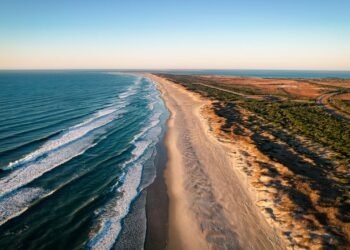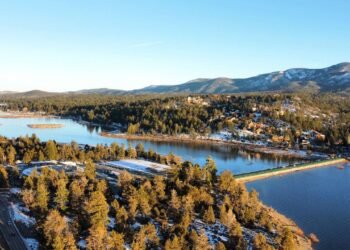USAID, the “soft power” arm of the federal government that awards grants for education, health care, and environmental conservation to developing countries, was one of the first casualties of Trump’s second term. Billionaire Elon Musk and his Department of Government Efficiency (DOGE) spent a weekend in early February “feeding USAID into the woodchipper,” per his post on X, because of his unfounded belief that it’s a “scam.” The move has translated into the firing of nearly all staff and the cancellation of 83% of its programs. And while the agency was best known for its health initiatives–one study estimates that 14 million people could die by 2030 as a direct result of this pullback—USAID has also been doing critical work that directly impacts travelers since the 1960s, including establishing and maintaining national parks and conservation areas around the globe.
The Amazon was arguably hit the hardest in terms of biodiversity funding. The funding freeze has halted $70 million in grants for conservation projects in Colombia alone–mostly in and around Guaviare, where rapid deforestation jeopardizes decades of progress for endangered species.
Guaviare is one of the most biodiverse corners of the planet, carved up by five-colored rivers that look like liquid rainbows due to an endemic aquatic plant that blooms in them. Near the ancient rock paintings are a series of lagoons where the continent’s famous pink river dolphins are friendlier than their counterparts in the Amazon River, swimming right up to boats, splashing and leap around flirtatiously, even catching rope in their mouth and tugging vehicles through the oxbow lake.
This is the kind of ecotourism draw that offers a real financial incentive for the community to abandon deforestation and poaching in favor of protecting the dolphins and their natural habitats. The area just needed to build the infrastructure for international travelers, who tend to have more requirements for food and lodging than regional visitors, in order to learn how to self-sustain as a global attraction. And the USAID grants were the turning point for starting to generate that local interest in building tourism. “These are the places that are most important to go, because they really need that cashflow to get their business started and going,” says Mogollón. “Many times people from abroad will open the locals’ eyes to the jewels that they have, that they’re living in.”
The effort was working: Colombia’s visitor numbers spiked to a record high in 2023, up nearly 25 percent from the previous year, and the former guerillas and ranchers in Guaviare “were starting to make a small enterprise to bring tourists to this place, to be able to know the river dolphins and to be able to interact a little bit with them and to understand what is the importance of forest conservation for these species,” says Roberto Gomez, who was running the USAID-funded anti-logging program Amazon Alive until March 31.
It was incredibly frustrating for Mogollón and Gomez, then, when the promised funding suddenly vanished, leaving local participants in their programs with a deep sense of betrayal. “It took some time and some effort to convince them that ecotourism could be a very good source of income,” says Gomez. “And suddenly they lose the funds and it’s like, well you deceived me. You said something that wasn’t true.”














